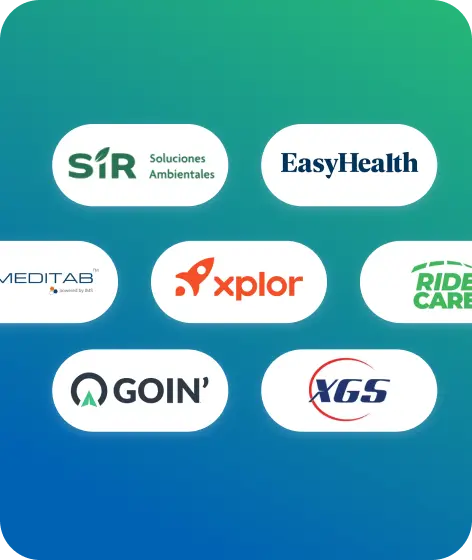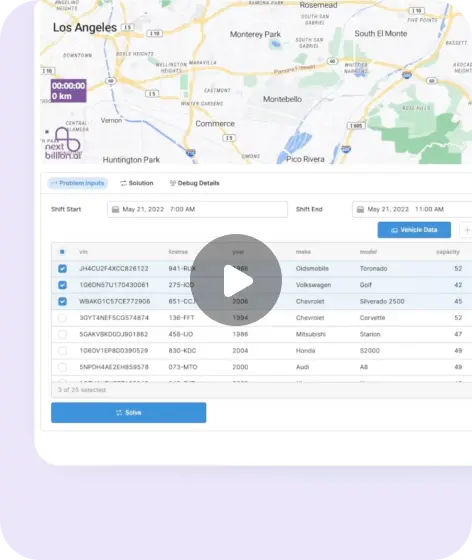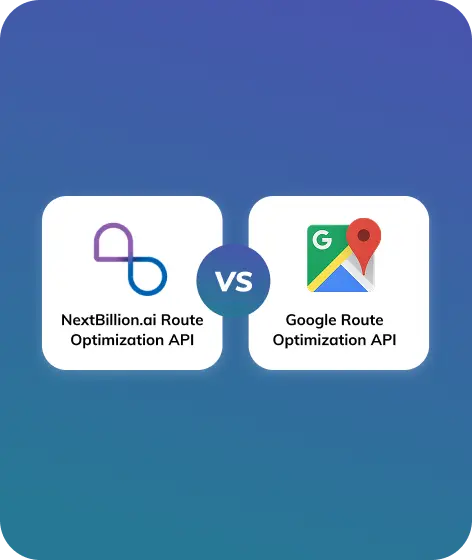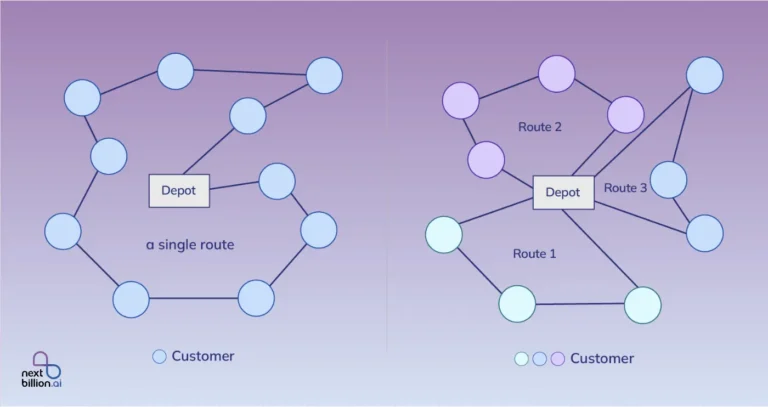
Table of Contents
On a crisp December morning, the clock is ticking for a global delivery company preparing to move millions of holiday packages. As deadlines loom, planners must decide how to organize fleets, schedules, and deliveries with precision. Should they begin with the resources at hand and map the earliest possible routes? Or should they start from the promised delivery date and work backward to ensure every package arrives on time? These are the pivotal decisions that forward and backward scheduling help solve.
Scheduling defines how businesses in logistics, manufacturing, and project management align their resources and workflows to meet operational demands. Forward scheduling calculates timelines starting from the present, while backward scheduling maps out tasks to meet a fixed deadline. Both methods are proven strategies that help businesses manage timelines, resources, and priorities efficiently. But understanding when to use each—and how they can shape operations—is critical. This article explores their mechanics, benefits, and the scenarios where each excels.

Key Takeaways
- Forward scheduling begins with available resources and calculates the earliest completion date for tasks.
- Backward scheduling starts with a fixed deadline and determines when tasks need to start to meet that date.
- Both strategies help manage time, resources, and deliverables effectively, depending on the project’s goals.
- Forward scheduling is ideal for projects without strict deadlines but with a focus on resource optimization.
- Backward scheduling ensures that critical deadlines are met, making it perfect for event-driven or customer-focused operations.
- The choice between the two depends on factors like resource availability, deadline flexibility, and operational priorities.
- Advanced scheduling tools powered by AI offer businesses a way to implement these strategies dynamically and adaptively.
How Forward Scheduling Works
Forward scheduling begins with what’s immediately available—resources, time, and labor. It works by starting tasks at the earliest possible point and calculating the timeline as the project progresses. In logistics, for example, this might mean dispatching drivers as trucks are loaded, letting deliveries flow based on readiness rather than urgency.
This method shines in environments where flexibility exists in timelines, allowing businesses to focus on maximizing resource utilization and productivity. With forward scheduling, tasks are set in motion as soon as possible, ensuring workflows stay active and no time is wasted waiting for tasks to begin.
Benefits
- Maximizes resource usage: Ensures that all available assets, from workers to machinery, are utilized efficiently.
- Encourages early project visibility: Managers can monitor progress and identify bottlenecks long before they affect delivery.
- Supports proactive, flexible planning: Tasks can be adjusted as priorities or conditions change.
Limitations
- Lacks deadline focus: It may not align well with projects that require strict adherence to a specific completion date.
- Potential for idle resources later: If resources are unevenly distributed, some may become underutilized toward the project’s end.
How Backward Scheduling Works
Backward scheduling flips the script and starts with the desired completion date, planning backward to determine start times for each task. For example, a factory might need to deliver an order by December 20th. Planners would calculate backward from that date, ensuring that production, packaging, and shipping align perfectly to meet the deadline.
This method is indispensable when timing is non-negotiable. It ensures that every step aligns with the final goal, reducing the risk of missing critical deadlines.
Benefits
- Focuses on deadlines: Ensures on-time delivery and builds trust with customers and stakeholders.
- Minimizes delays: By starting with the end in mind, backward scheduling identifies critical paths and prevents bottlenecks.
- Optimizes time-sensitive projects: Aligns tasks to meet specific events or delivery dates effectively.
Limitations
- Less flexible: A rigid deadline can constrain adjustments, leaving little room for unexpected changes.
- Requires precise planning: Mistakes in estimating task durations can cascade into missed deadlines.
Application Scenarios: Forward vs. Backward Scheduling
The choice between forward and backward scheduling often depends on what’s at stake: efficiency or timing. Each strategy serves a different relationship to time.
Forward Scheduling
Forward scheduling thrives in operations where the goal is to keep things moving, ensuring resources are constantly in motion. It’s perfect for ongoing operations without hard deadlines, like manufacturing consumer goods. Take a regional distribution center where each truck arriving at the dock triggers a sequence of tasks: unloading, sorting, and reloading for outbound delivery.
Backward Scheduling
Backward scheduling, on the other hand, is the art of working backward from the inevitable. It is vital in industries where deadlines define success. Think of an urban delivery service promising groceries at a customer’s door by 8:00 a.m. For the driver to arrive on time, each task must align: the route mapped, the items packed, and the vehicle ready to roll at just the right moment. Backward scheduling ensures every detail converges on a singular goal—the delivery window.
How NextBillion.ai Enhances Scheduling

Integrating NextBillion.ai’s Mapping and Optimization APIs
To address the challenges of both forward and backward scheduling, businesses can leverage NextBillion.ai’s Routing and Optimization APIs. These tools empower businesses with real-time, adaptive scheduling capabilities that dynamically adjust to changes in resources, timelines, and external factors like traffic or weather.
- Forward Scheduling Use Case: A manufacturing plant uses NextBillion.ai’s APIs to allocate available drivers and vehicles dynamically. By integrating real-time traffic and resource data, the system calculates the earliest feasible delivery times while optimizing routes to reduce costs.
- Backward Scheduling Use Case: An e-commerce business integrates NextBillion.ai’s tools to guarantee same-day delivery. The API calculates backward from the customer’s delivery window, ensuring that picking, packing, and dispatch tasks align perfectly with the promised timeline.
Key Features
- Real-Time Data Integration: Adjusts schedules instantly based on live conditions such as traffic or weather disruptions.
- Customizable Parameters: Tailors solutions to specific industries, whether optimizing last-mile delivery or streamlining manufacturing timelines.
- Scalability: Supports businesses managing both small-scale and large-scale operations without compromising on performance.
- Predictive Analytics: Identifies potential bottlenecks in advance, ensuring seamless operations.
Example Implementation
For a global delivery company preparing for the holiday rush, integrating NextBillion.ai’s API enables planners to:
- Automate route assignments for hundreds of vehicles in real time.
- Minimize delivery delays by adapting to traffic disruptions.
- Maintain transparency with customers through accurate ETA updates.
NextBillion.ai is The Pulse of Operations
Every business moves to the rhythm of time—scheduling determines whether that rhythm harmonizes or falls apart. The choice between forward and backward scheduling is not a question of method but of perspective. It’s about knowing when to flow with the momentum of the present and when to engineer outcomes by anchoring to the future.
With tools like NextBillion.ai, businesses can implement both strategies seamlessly, ensuring flexibility and precision in their operations. As industries grow more complex, leveraging AI-driven solutions will be key to staying ahead, navigating challenges, and delivering excellence at every step.
The question isn’t whether you can control time—it’s whether you can create a system that turns it into an ally.
About Author
Rishabh Singh
Rishabh Singh is a Freelance Technical Writer at NextBillion.ai. He specializes in Programming, Data analytics and technical consulting, turning complex tech into clear and engaging content.







